The Belmont Citizens Forum Newsletter sent questionnaires and received responses via email from candidates for Belmont selectman. Below are the responses from incumbent Mark Paolillo, running for reelection to his third term on the board, and Alexandra Ruban, running for the first time. The election is scheduled for April 5. Commuter Rail Belmont Citizens Forum: The MBTA recently abandoned the idea of a new station on South Pleasant Street. However, the future of Waverley Station is still in question. While Belmont has no authority over how the MBTA addresses accessibility at Waverley and Belmont Center Stations, the town certainly has [READ MORE]
Globe Critique Spurs Town Sewerage Review

By Anne-Marie Lambert and Frank Frazier Have you seen the sewer today? This past summer, a Boston Globe editorial (“Belmont Needs to Clean Up Its Act,” August 14, 2015) caused the Belmont selectmen to request a presentation on the town’s sewer and storm drain systems. Belmont’s director of community development Glenn Clancy welcomed the opportunity. He took issue with Globe author Alan Wirzbicki’s comparison of Belmont’s $8 million in sewer expenditures dating from a 1998 Notice of Violation from the EPA. He cited the expenditures of Cambridge and Revere, both of which have much more significant pollution issues than Belmont. [READ MORE]
Mittens for Cold Weather Bicycling

Cold hands are not a reason to stop bicycling in winter. You can fix cold hands with army surplus mittens that date from the Korean war. While there may be modern products that would work well for me, I have found that reasonable-looking bicycle gloves either do not keep me warm or are uncomfortable. I know other bicyclists who also consider these surplus mittens to be the best. My army surplus mittens are shells that have supple leather where I connect with my bicycles. They are intended to be used with knit liners. The liner material is wool and nylon. [READ MORE]
A Tribute to Judith K. Record’s Legacy
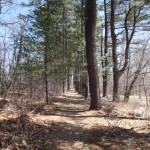
By Heli Tomford For many years, social scientists calculated generations as twenty year intervals. By that estimate, it was a generation ago that a January 1996 Boston Globe headline stated: ”McLean may quit Belmont campus to reduce costs.” McLean fortunately did not quit its campus, a decision its trustees made half a year later. Instead, the hospital and the town of Belmont embarked on a long, arduous journey to reach an agreement on how McLean’s 238 acre campus would be used–a journey that was significantly influenced by Judith K. Record. While Belmont’s Selectmen initially chose a cautious wait-and-see approach, many [READ MORE]
Letter to the Editor: A Single Station at Pleasant Street
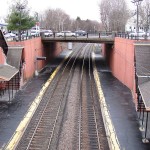
To the Editor: My first encounter with Belmont was commuting to Belmont Center from North Station as a co-op student working on a census project. In the 70’s it was the most convenient way to reach Belmont without a car. One of the things I loved about the commute was the Belmont Center train station, which is now the Lion’s Club. The elimination of station buildings like Belmont Center has been part of a cultural shift as well as a simple reaction to the economics of staffing and maintenance. Since this comfortable station building has been closed, more often commuters [READ MORE]
Friends of Lexington Bikeways Serves Town
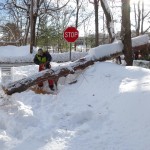
By Peggy Enders The Friends of Lexington Bikeways (FoLB) is a nonprofit 501c(3) volunteer organization that promotes and supports biking and the shared use of bicycle routes in and around Lexington. FoLB was established in 1991 as the “Friends of the Minuteman Bikeway” at a time when the building of the Bikeway was underway but still had many residents concerned about possible negative impacts, including the loss of backyard privacy and declining home values. Those fears were never realized, and today the Bikeway is considered one of the most popular recreational (not to mention economic) resources in the area. Today, [READ MORE]
Belmont Goes Solar Offers Solar Discounts Through April

By Alix van Geel The shortest days of the season have passed, and now is the perfect time to consider adding solar to your Belmont home or business. For a limited time through April 30, 2016, Belmontians can take advantage of discount pricing for solar rooftop panels to provide electricity, thanks to Belmont Goes Solar. Belmont Goes Solar is a group of volunteers working to expand small-scale solar energy installations in town. Belmont Goes Solar is supported by the Board of Selectmen and includes members of the Belmont Energy Committee, Sustainable Belmont, Mothers Out Front, and Belmont Light. The group’s [READ MORE]
Belmont Driveways Can Soak Up Stormwater
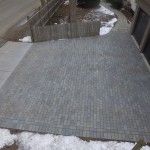
By Anne-Marie Lambert Most Belmont driveways are impervious surfaces, and they make local flooding and water pollution worse—but that doesn’t have to be the case. When a driveway is made of asphalt or concrete, rainfall flows quickly to catch basins, erodes soil along the way, and increases pollution and flooding risks in downstream neighborhoods. Water that soaks into the soil doesn’t have any of these effects. More and more homeowners are taking advantage of today’s porous paver technologies in order to allow the soil to soak up rain before it reaches our catch basins and waterways. Plus, the pavers can [READ MORE]
Cambridge Redirects Runoff from 400 Acres
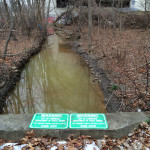
Cambridge Sewer Separation Makes Alewife Brook Cleaner By Anne-Marie Lambert On December 21, 2015, Cambridge celebrated a major milestone of the Alewife Sewer Separation project, a massive public works that separates sanitary sewers from storm sewers. When these two types of sewers are connected, heavy storms drive raw sewage into local waterways such as the Alewife Brook—as has been happening at the Brook for decades. As of December 21, the city will now provide water quality treatment of stormwater runoff from more than 400 acres of the urbanized Huron Avenue and Fresh Pond neighborhoods by directing it to the 3.4-acre [READ MORE]
Letter to the Editor: Hell Strips

To the Editor; If I were not a very experienced gardener, I wouldn’t know from reading Kate Bowen’s otherwise excellent article (“Garden in Your Sidewalk Hell Strip” BCF Newsletter, September 2015) that hell strips are called hell strips for a good reason. Growing conditions in these areas are as a rule hellish! Only a few tough-as-nails plants can withstand the salt, CO2 pollution, and tree root competition that characterize these strips. It would have been great if the article had acknowledged these challenges, and also provided a list of top 10 hell strip plants that have passed the long-term survival [READ MORE]
The Sun Rises for Belmont Solar Customers

By Roger Wrubel If you are interested in installing solar panels on your roof and saving money while reducing your carbon footprint, the time to act is NOW. The first reason to act now is that the 30% federal tax credit for residential solar systems expires a short year from now, on December 31, 2016, and may very well not be renewed. To qualify for the credit, your solar system must be operational by the end of the 2016 calendar year. The second reason to act now is that after several tumultuous years of internal debate and false starts, which [READ MORE]
Shared Street has More Space for Trees
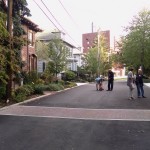
by Meg Muckenhoupt In October 2014, the city of Cambridge finished building its first “shared street” on Longfellow Road, a dead-end street across from Mount Auburn Hospital. One year later, the paving and plantings looked as if they’d always been there. . . and as if it is perfectly natural to have cars, bicycles, pedestrians, and dogs all in the same space. The project began in 2012, when Longfellow Road residents started considering how to repair their street and sidewalk. Several street trees were unhealthy, and needed to be removed—but new trees couldn’t be planted on Longfellow Road because the [READ MORE]
Belmont Center Parking: It’s Complicated
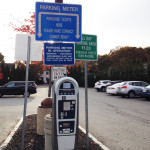
By Evanthia Malliris It’s a common sight in Belmont Center, cars poking along Leonard Street, seeking that sweet reward, an open parking spot! A quick dash to the dry cleaners, pick up a coffee, and you’re on your way—and not even late for work. But what if you can’t find that space? Maybe you’ll circle the block a few times, and if you’re not lucky, just head home. You’ll do the errand another time. But why not just park in the large municipal lot behind the Leonard Street businesses, or on a residential side street? After all, it’s just a [READ MORE]
Should Waverley Station Close?

MBTA to hold November 16 Session on consolidating Waverley, Center stations By Sue Bass Should Belmont continue to have two commuter rail stations that people can walk to? Or is it better to have just one station with a parking garage that people can drive to? That’s not officially the topic of the MBTA commuter rail presentation on November 16, but it’s the question hovering over the event. Formally, the meeting is about the T’s need to spend $15 million or more on a station that serves only 117 daily riders—or to close the station entirely. This issue arises because, [READ MORE]
Bike Paths Open In Somerville, Cambridge
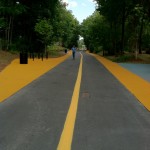
By Meg Muckenhoupt Two new bicycle paths opened in Somerville and Cambridge this summer: an extension of the Somerville Community Path from Cedar Street to Lowell Street; and a path through Flagstaff park in Harvard Square for bicyclists heading north on Massachusetts Avenue. At the ribbon-cutting for the Somerville Community Path on August 18, Somerville Mayor Joe Curtatone made remarks recorded by the Friends of the Community Path: “Somerville as a community has a certain set of values that we believe in and we planned and envisioned the future together based on those values .. and an important part of [READ MORE]
Belmont Center Bridge Clean At Last

By Grant Monahon After many years and the efforts of many residents and businesses, Belmont’s 100 year old granite bridge has been cleaned. The project, initiated by Angelo Firenze when he was a selectman, has been undertaken without public funds. The cleaning was commplished with a combination of town-wide professional support and generous donations to the Belmont Citizens Forum from many residents and businesses, including the Belmont Center Business Association, The Belmont Savings Bank Foundation, and the Flett Co. The hard work of actually removing the dirt and grime has been possible through the perseverance and energy of Dante Muzzioli, [READ MORE]
Make a Garden in Your Sidewalk “Hell Strip”
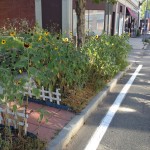
By Kate Bowen Hell strip. There. I wrote it, but I didn’t coin the phrase. That credit is given to Lauren Springer Ogden, a renowned gardener, who came up with the term “hell strip.” You know exactly what I am talking about: that evil zone between you and the road. It might be paved; it might have some weeds; it might have some tidy grass; or it might be bursting with life—a microcosm of annuals, perennials, and wildlife. Many Belmont streets have paved shoulders. The town does not formally encourage restoring paved hell strips, and open shoulders are often paved [READ MORE]
Winn’s Brook Gets “F” Grade for Health

People who visit the Mystic River and its tributaries have a new, more precise way to find out how healthy the water is near them. Last summer, the Mystic River Watershed Association (MyRWA) worked with the Environmental Protection Agence (EPA) to create a new location-based “report card” for the Mystic River. The grades are based on bacteria counts. The state has maximum allowable bacteria counts for swimming and boating. High bacteria counts result from illicit sewer discharges to storm drain systems and urban stormwater runoff. A higher grade indicates that the waterway complies with state standards; a lower grade means [READ MORE]
How to Measure Belmont’s Stormwater
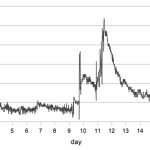
By Sumner Brown Stormwater can be troublesome. Those drops of water add up, causing floods, overflowing sewers, and reduced water quality. Belmont is striving to remedy its stormwater problems, and we need to monitor the effects and measure the results. Water Flow in Alewife Brook Rain falls on the ground and finds its way into streams. We can measure the overflow from rainstorms by placing flow gauges where major streams leave Belmont, So far Belmont has only one such stream flow gauge, in Alewife Brook. The gauge is operated by the US Geologic Survey. It is shared with Arlington, Somerville [READ MORE]
EPA Proposes Expanded Stormwater Permit

by Nancy Hammett Belmont, like other urban communities throughout the country, must obtain a “permit” under the Federal Clean Water Act in order to discharge water from its storm drains into local streams and ponds. This permit (the “Municipal Separate Storm Sewer System” or “MS4” permit) imposes a number of responsibilities on the town. These requirements have been in effect in Massachusetts since 2003 and a new version of the permit is in the offing. The federal Environmental Protection Agency (EPA) expects to issue the new regulations by the end of this year, and they will take effect six months [READ MORE]

